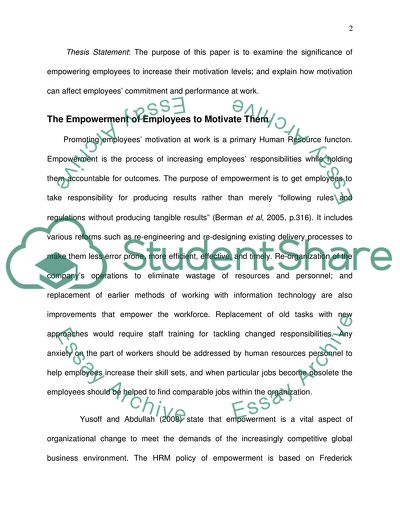Cite this document
(Motivation and Its Impact on Employees Commitment and Work Performan Research Paper - 1, n.d.)
Motivation and Its Impact on Employees Commitment and Work Performan Research Paper - 1. Retrieved from https://studentshare.org/human-resources/1750552-employee-motivation-for-an-organizational-behaviorhuman-resources-class
Motivation and Its Impact on Employees Commitment and Work Performan Research Paper - 1. Retrieved from https://studentshare.org/human-resources/1750552-employee-motivation-for-an-organizational-behaviorhuman-resources-class
(Motivation and Its Impact on Employees Commitment and Work Performan Research Paper - 1)
Motivation and Its Impact on Employees Commitment and Work Performan Research Paper - 1. https://studentshare.org/human-resources/1750552-employee-motivation-for-an-organizational-behaviorhuman-resources-class.
Motivation and Its Impact on Employees Commitment and Work Performan Research Paper - 1. https://studentshare.org/human-resources/1750552-employee-motivation-for-an-organizational-behaviorhuman-resources-class.
“Motivation and Its Impact on Employees Commitment and Work Performan Research Paper - 1”, n.d. https://studentshare.org/human-resources/1750552-employee-motivation-for-an-organizational-behaviorhuman-resources-class.


